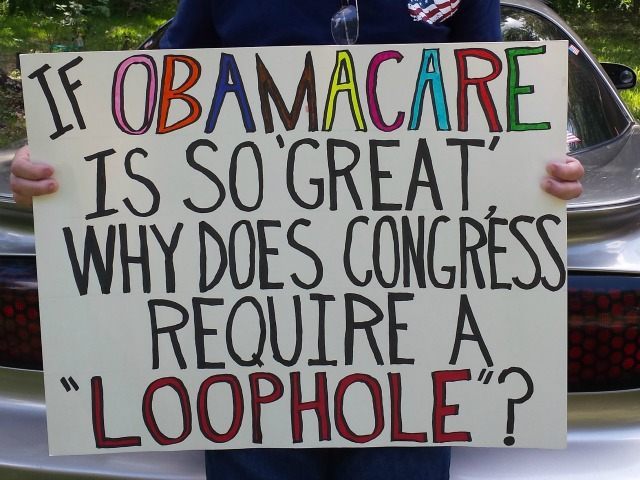The open enrollment period for the Affordable Care Act’s (ACA) exchanges began this week among signs of serious trouble – the biggest being price.
Customers are facing double-digit premium increases despite promises that the ACA would finally bring health care cost inflation under control. And this average masks massive increases for some: Residents of Oklahoma, Alaska, New Mexico, and Montana, for instance, are facing increases of 25 percent or more.
These price increases come at the same time that exchange-based health plans are trying to limit premium inflation by increasing deductibles – a phenomenon that an analysis by Yahoo Finance found is widespread. This means that under many of these plans, services like diagnostic testing, MRIs, specialty drugs, emergency-room visits and surgical procedures aren’t covered until after a patient racks up around $6,500 of in-network bills.
Even after the deductible is met, patients may still have to pay out-of-pocket to see a specialist because around one-in-seven exchange-based plans aren’t offering in-network access to them, according to recent research published in the Journal of the American Medical Association. Out-of-pocket expenses for exchange-based plans, therefore, are about double those of a typical employer-sponsored plan.
In other words, prices for these plans are going up while service is going down – not a good combination for the consumer. Understandably, Americans are staying away.
The nonpartisan Congressional Budget Office estimated that 20 million people would be enrolled in the exchanges this year, but the Administration recently halved that estimate to only 10 million, an increase of a mere 100,000 people over last year. Part of the reason for this low participation rate is due to the fact that a sizable number of existing enrollees are leaving. Around 1.3 million people have quit the exchanges this year; the five largest health insurers reported an 8.3 percent decline in enrollees in their third-quarter earnings results.
Experts say this low participation rate is unsustainable from an insurance pool perspective. Health care analyst Robert Laszewski told the New York Times that the number of exchange-based enrollees would need to double to ensure that enough healthy people participate to make the pools viable.
Because the existing enrollees are likely the oldest and sickest, the exchanges face the risk of an insurance death spiral, where sick enrollees push up the price of coverage, pushing out the comparatively healthy, and increasing premiums further.
It may be beginning to occur. According to CNBC, the number of plans on the federal exchanges is down around 12 percent from last year, and the number of most flexible PPO plans is down by about 40 percent.
Several states, including Oregon, Nevada, and Hawaii, have been forced to scrap their state-based exchanges altogether because of the economic headwinds for small states such as theirs. Eleven exchange-based co-ops have also shuttered, including one in Arizona on Sunday. The Health and Human Services Inspector General reported recently that most of the remaining co-ops are losing money and have low enrollment.
Clearly the ACA exchanges are not working. They should be deregulated so that the ingenuity of American job creators in the insurance industry can offer plans that people actually want at a price they can afford.
I recently discussed the problems with the employer-mandate portion of the ACA, namely the fact that employees are just not interested in employer-based plans. With two of the three legs of the ACA (the third being Medicaid expansion) looking so shaky, it’s conceivable that without commonsense, free market reforms, the whole thing may come crumbling down.
Alfredo Ortiz is CEO and President of Job Creators Network

COMMENTS
Please let us know if you're having issues with commenting.